May 2, 2016
I mentioned briefly in another post that my Hohner microphones are officially dead, and I should not be surprised. My research told me that the average life of a electret mic is about 5-10 years. The ones in my accordion lasted a lot longer than that, but expecting them to last more than 43 years might be asking a bit much… and so, when I got back my accordion from it’s repair session, I finally made the time to check the mics and they simply did not work.
In trying to keep with my desire to retain originality, I took the lesson I learned from searching for the cables and the first place I emailed for info was Hohner. Well, this time they let me down. Apparently, the mics in this accordion have not been made for a couple of decades, however they were ready to install some new generation mics if I sent them my accordion. Uh… no, not happening.
That led me to search locally for replacement electret mics that I found for a damn reasonable price ($2.50 a piece), and they did look promising, however, they were just nowhere near sensitive enough. Cranking the mixer attenuator and fader to maximum and I was just able to lightly hear my voice. That was $5 lost, but worth it… because it led me to the next step. Those capsules came from damaged dynamic mics… hey wait,I have some spare dynamic mics at home in a drawer doing nothing!
Some quick testing showed me that I had a couple of dynamic voice mics that appeared to be much more sensitive, however, I needed to experiment with getting the mic out of the case. In the first test, I took a $10 mic and ripped it apart down to the capsule, and did some soldering, and testing, and… it looked promising!
Then I took a little more expensive $20 mic and found it was more sensitive and sounded better because it had a more evident high-pass cutoff, which made the accordion sound more smooth and natural, and that is the one that I used for the main mic and the $10 one became my backup mic. The entire process took me about 45 minutes to complete, but only because I was really taking my time, and being slow and careful. I could have easily done the entire process in 20 minutes with both mics if I was a bit less caring.
Let me outline the process I took with comments and pictures…
Here is what it looks like straight from the factory on the treble and bass sides. These are the 2 mics in their rubber insulators that are dead on my accordion. Too bad that they died, but let’s make lemonade again. This means learning what I have in there, and where can I get replacements:
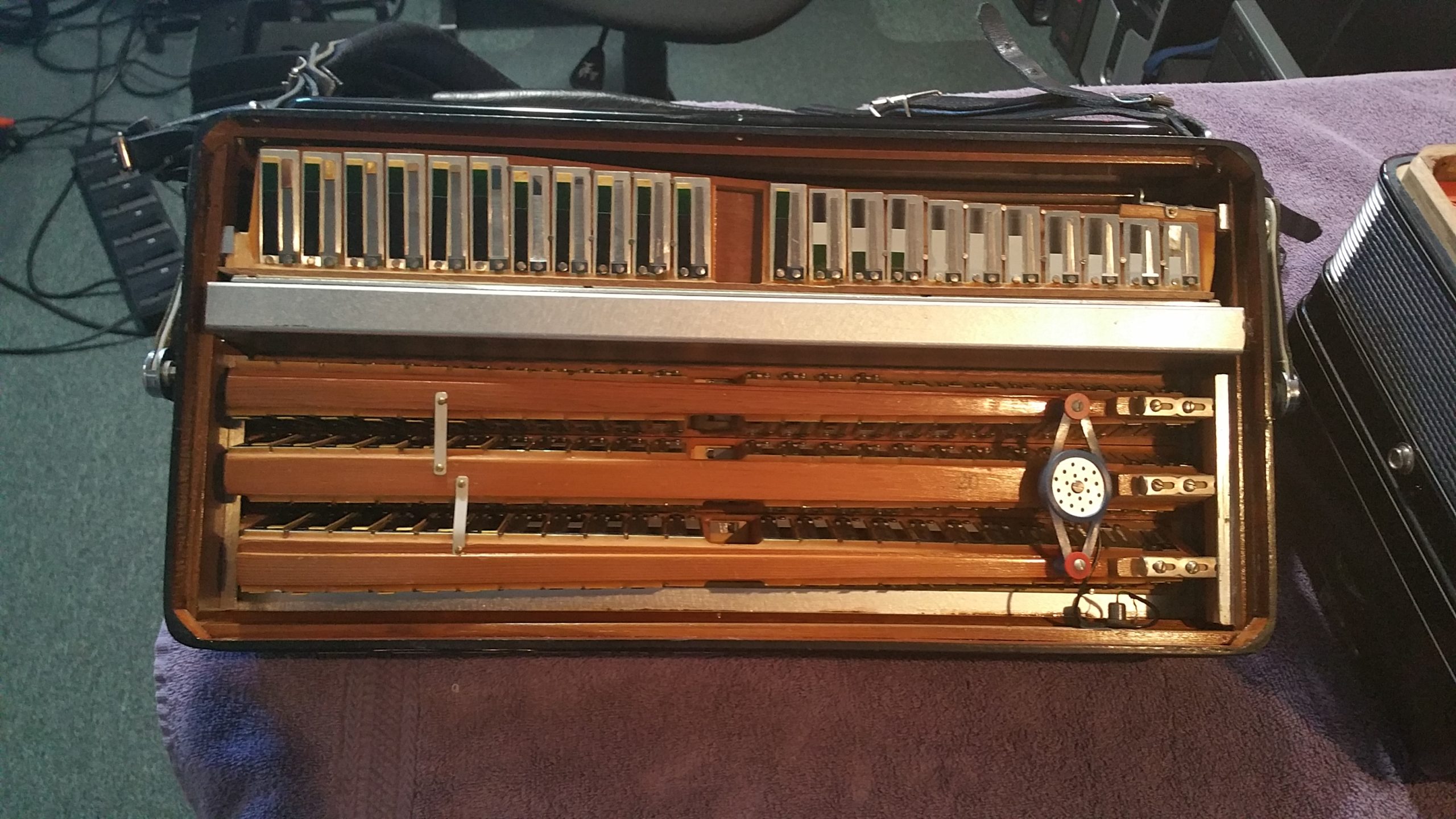
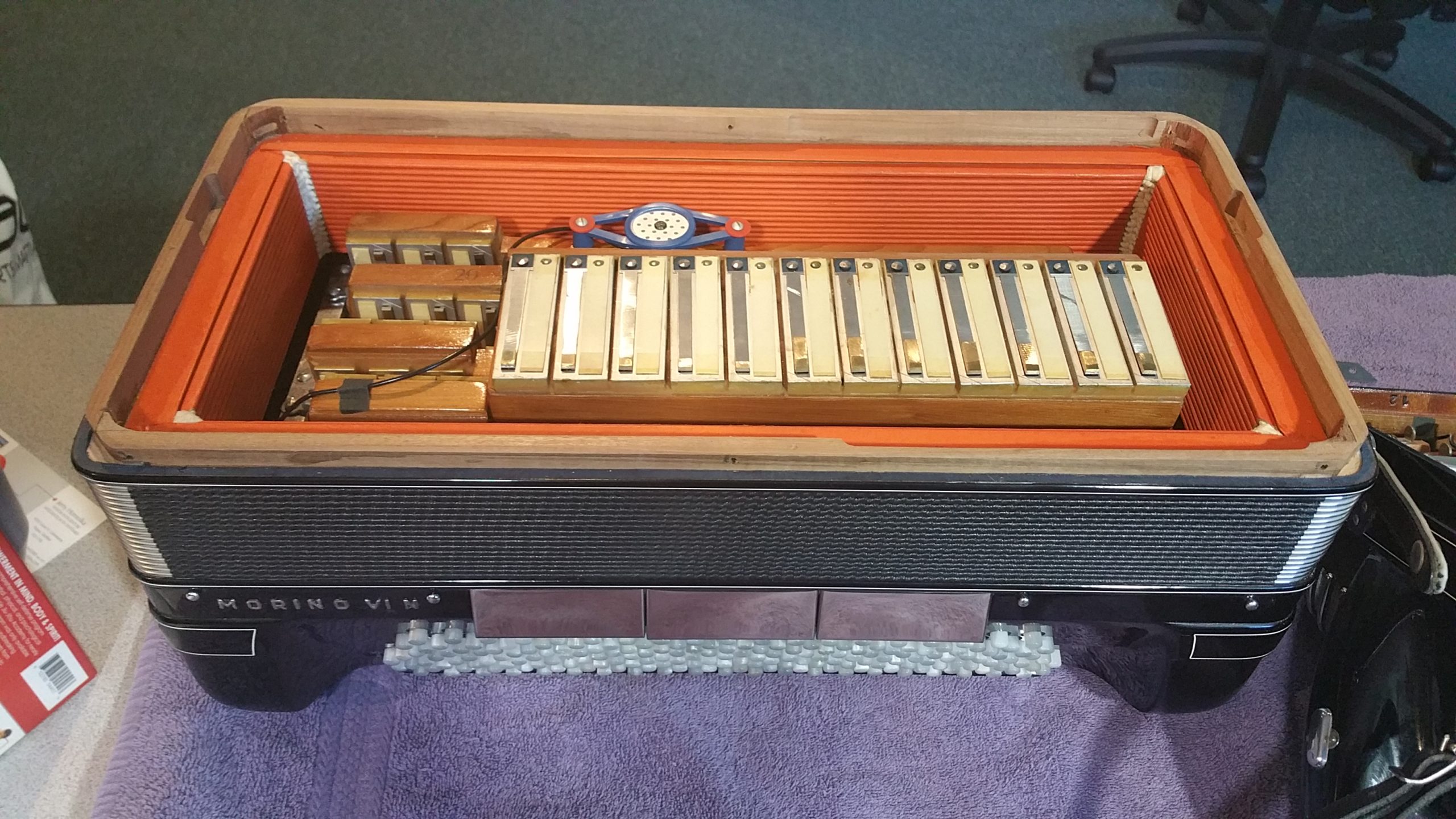
Lets start on the bass side.
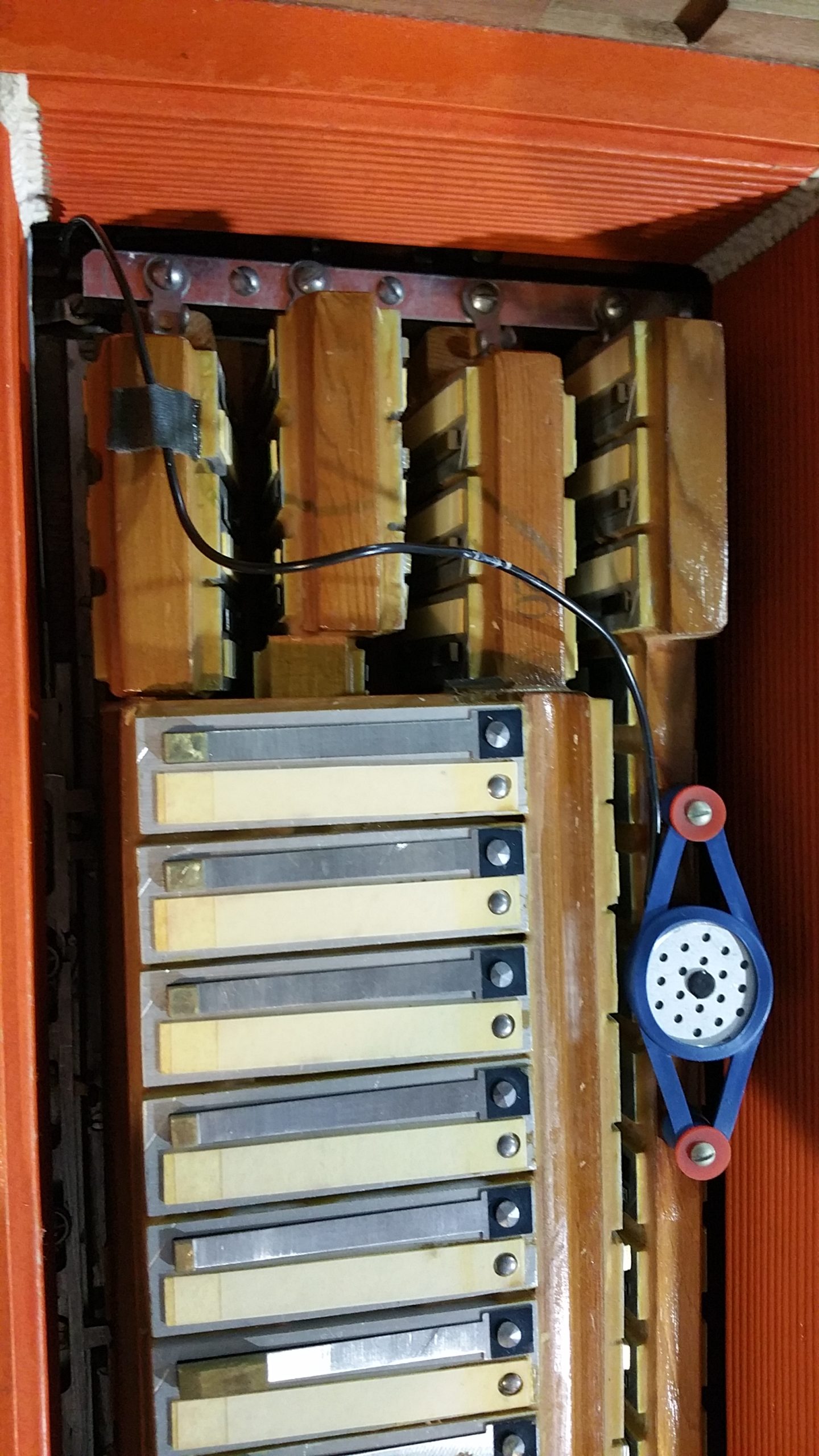
Unscrew the rubber isolators.
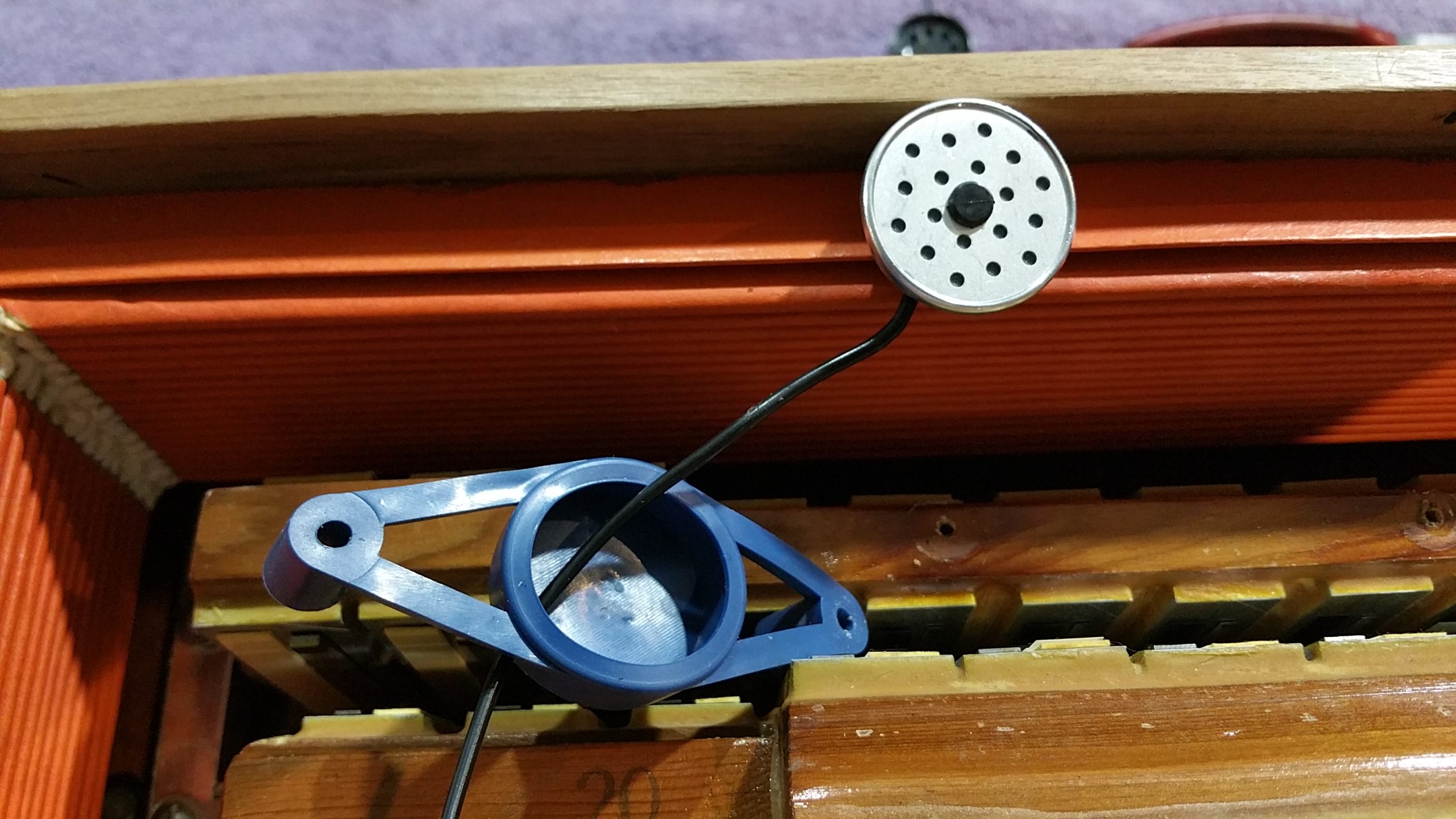
Remove the microphone from the rubber isolator.
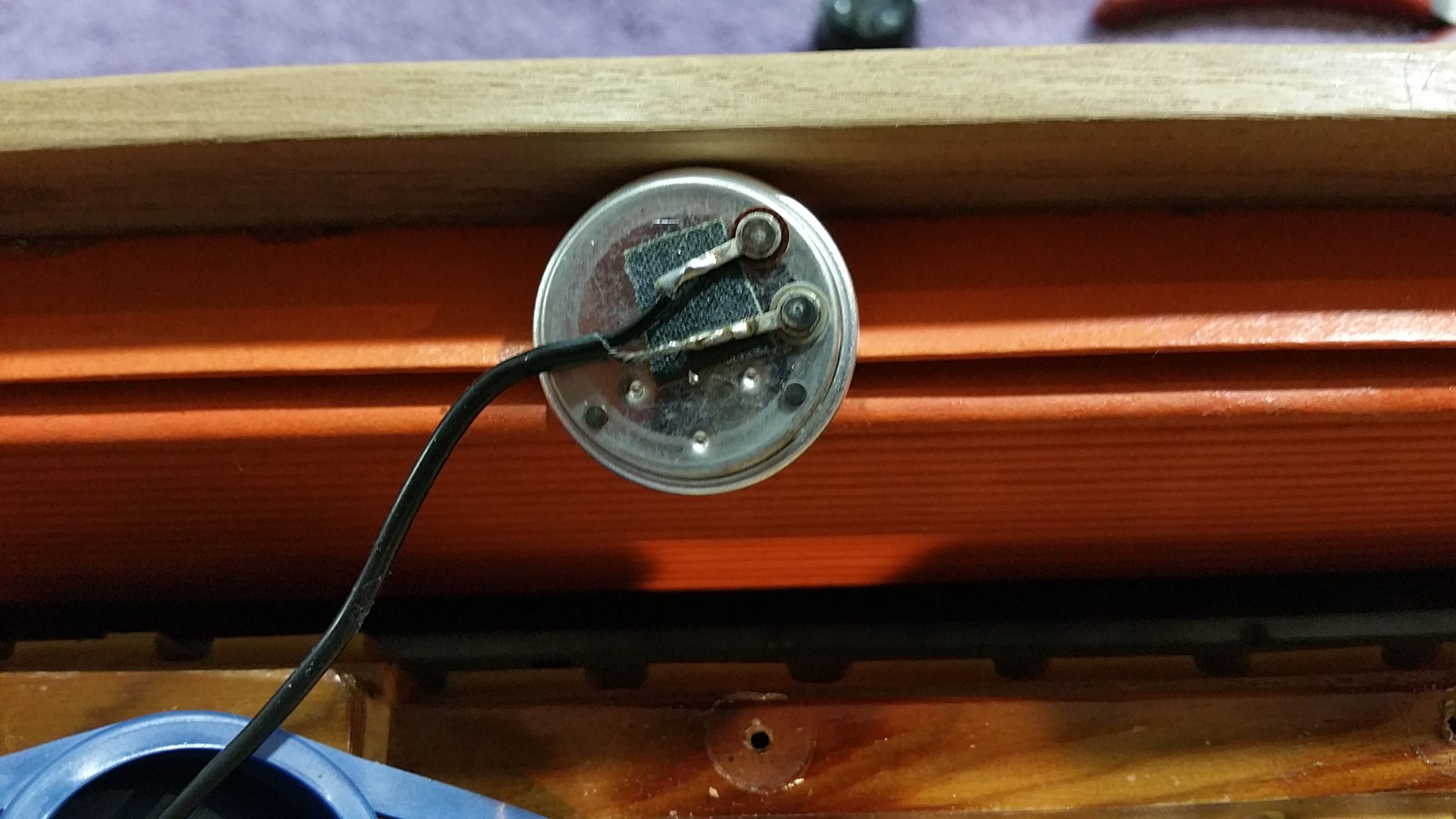
Unsolder the wires from the mics.
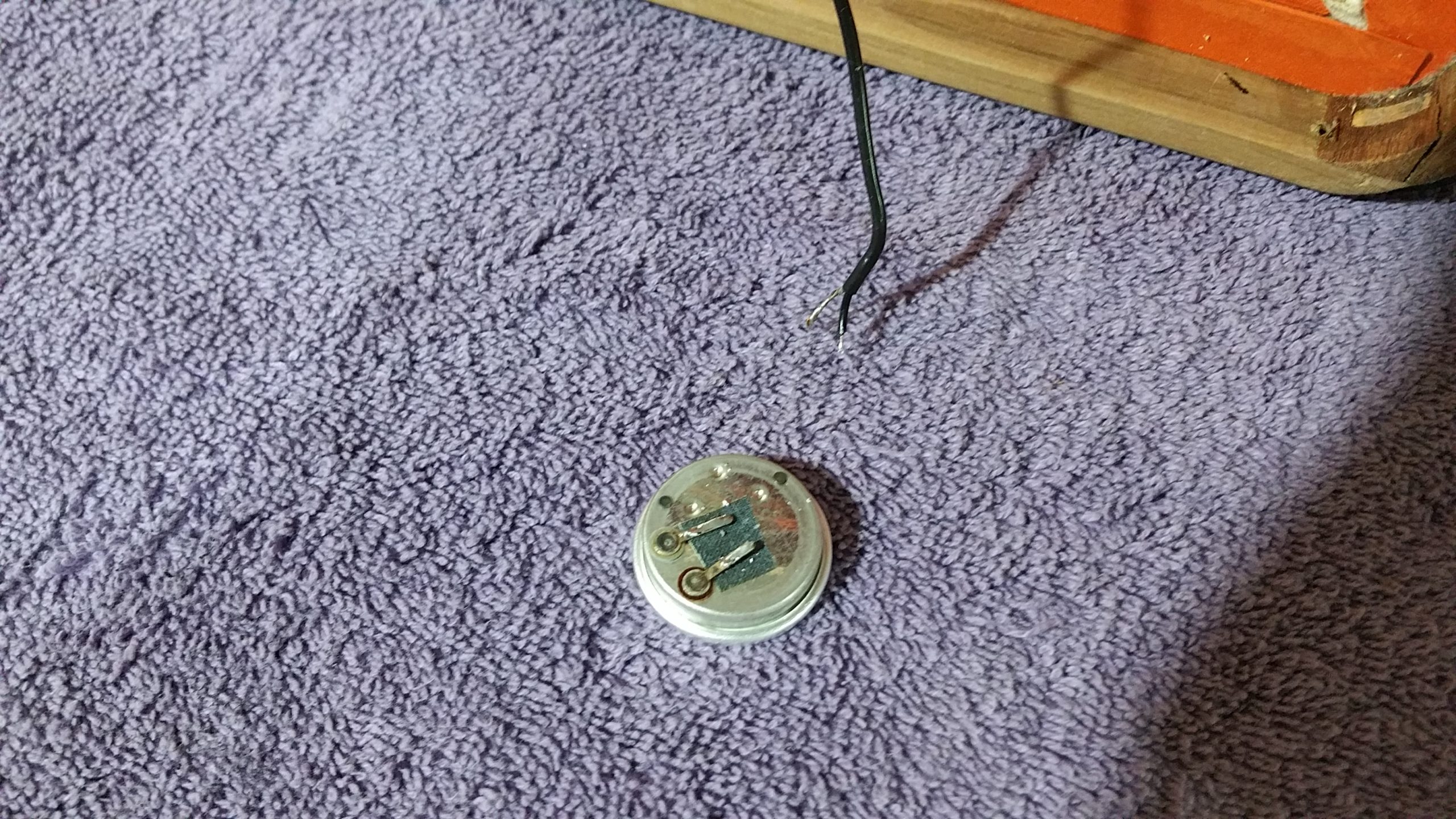
Here you see the dead mic from the front.
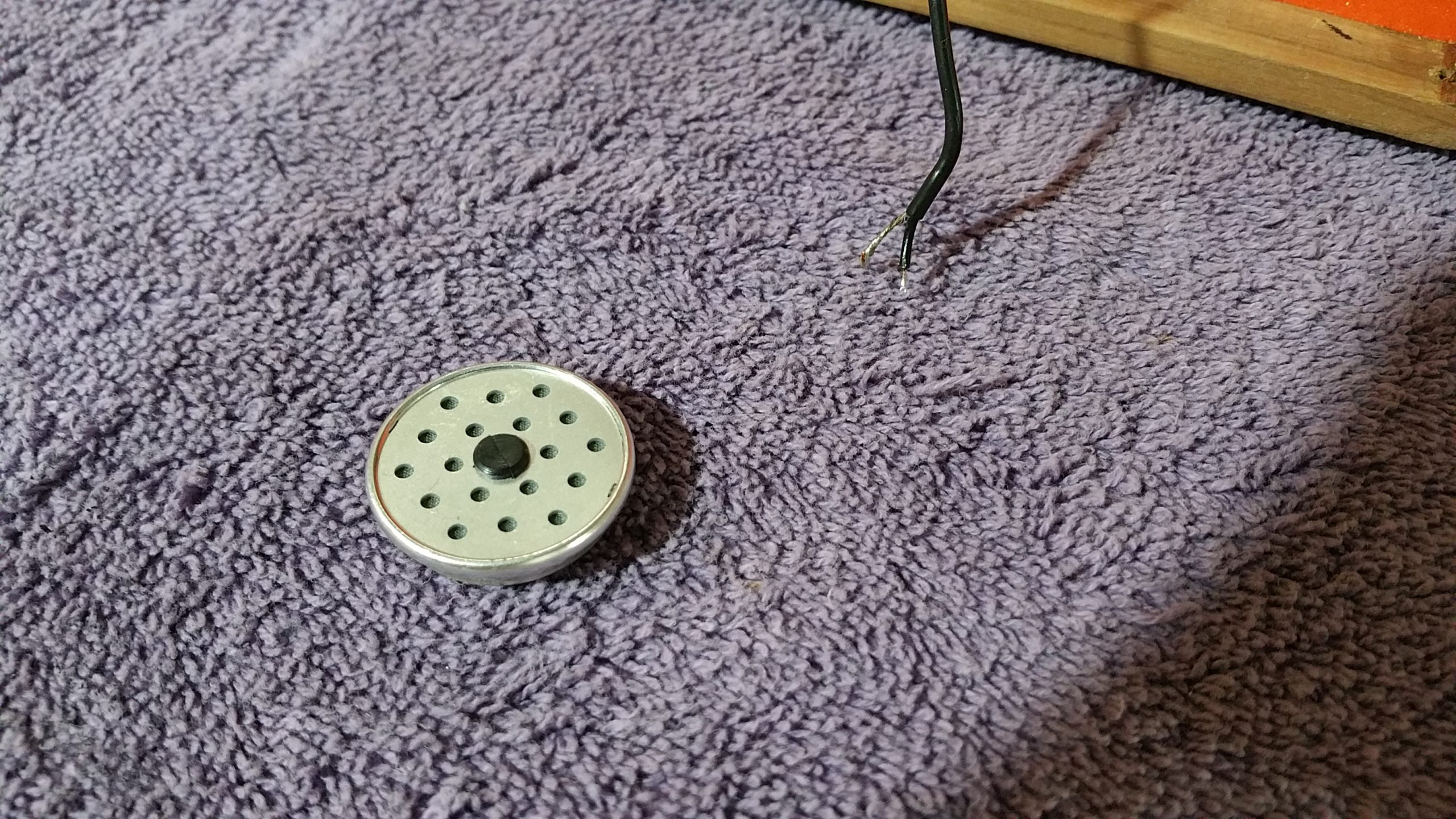
The capsule from my mic is in a plastic case. Now, I could take it out, however, I risk damaging the very fragile face so I leave them in the plastic case (capsule) and cut it down as small as possible. Here I take note of the polarity and then remove those wires soldered on it.
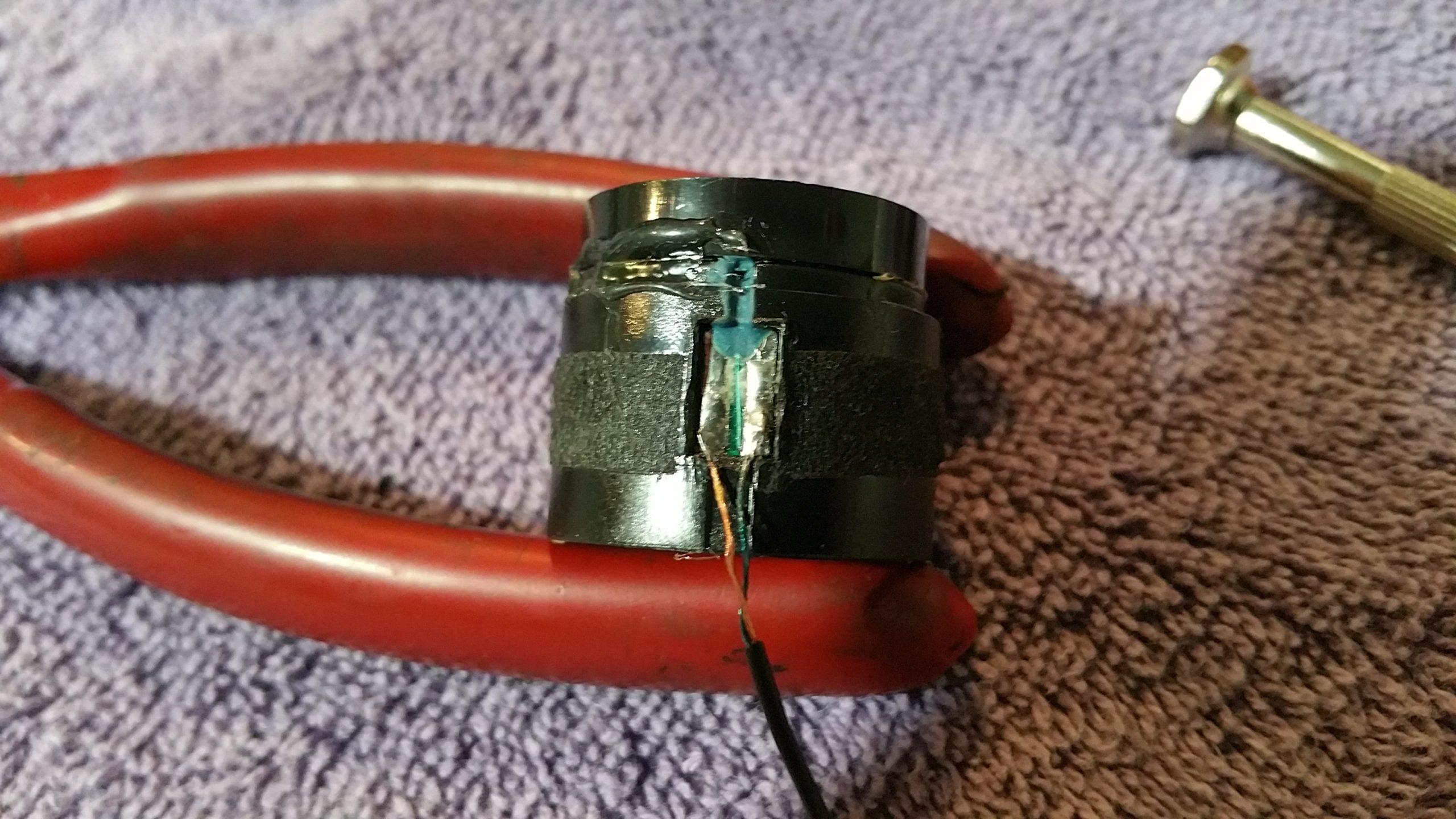
Slip the wire through the rubber isolator and then slip some shrink-wrap over the wire.
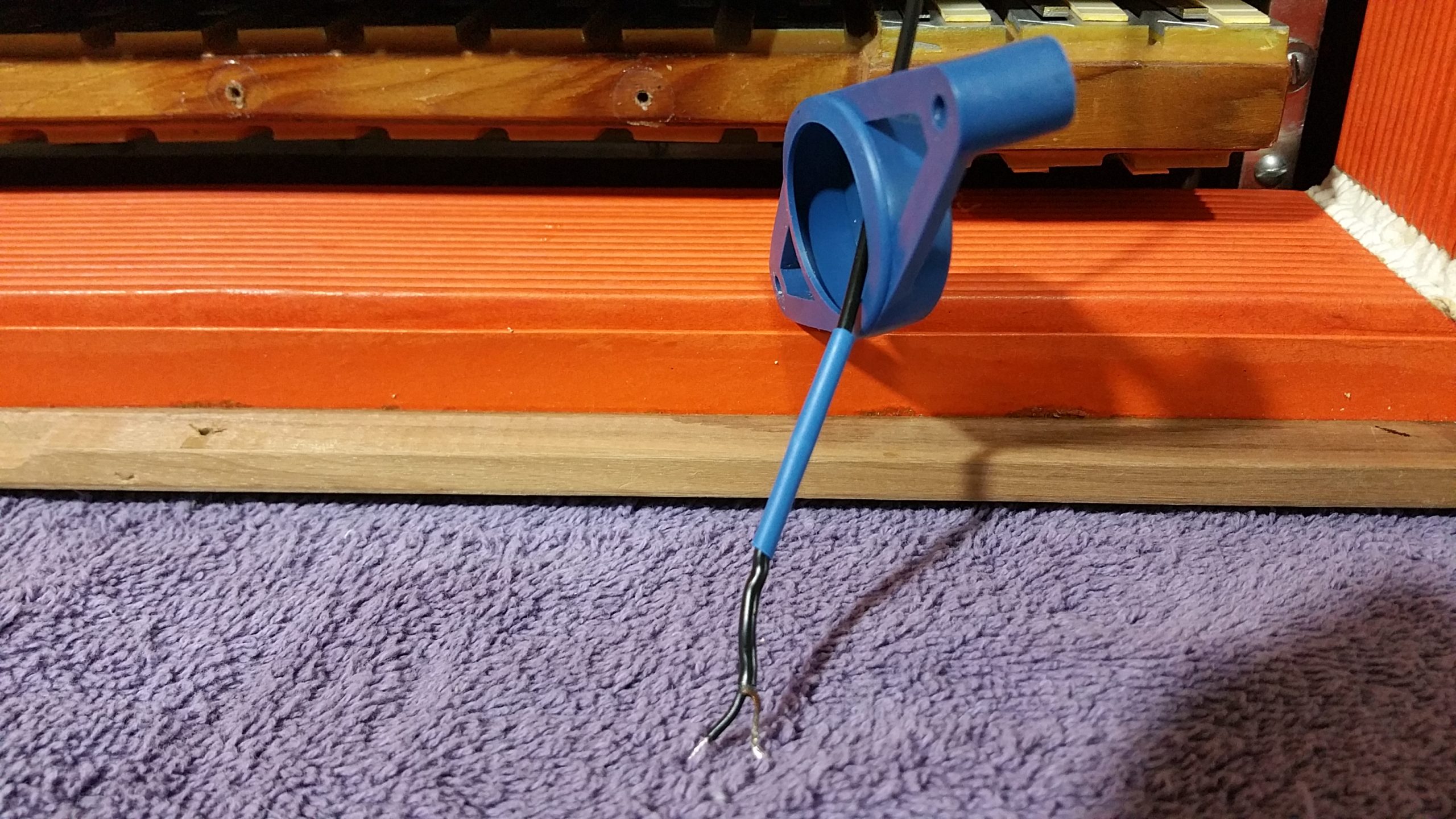
Solder the wire to the capsule in the proper orientation. This is where I then plugged in the factory cable in to the factory plug and tested it by speaking in to the mic… and it worked great!
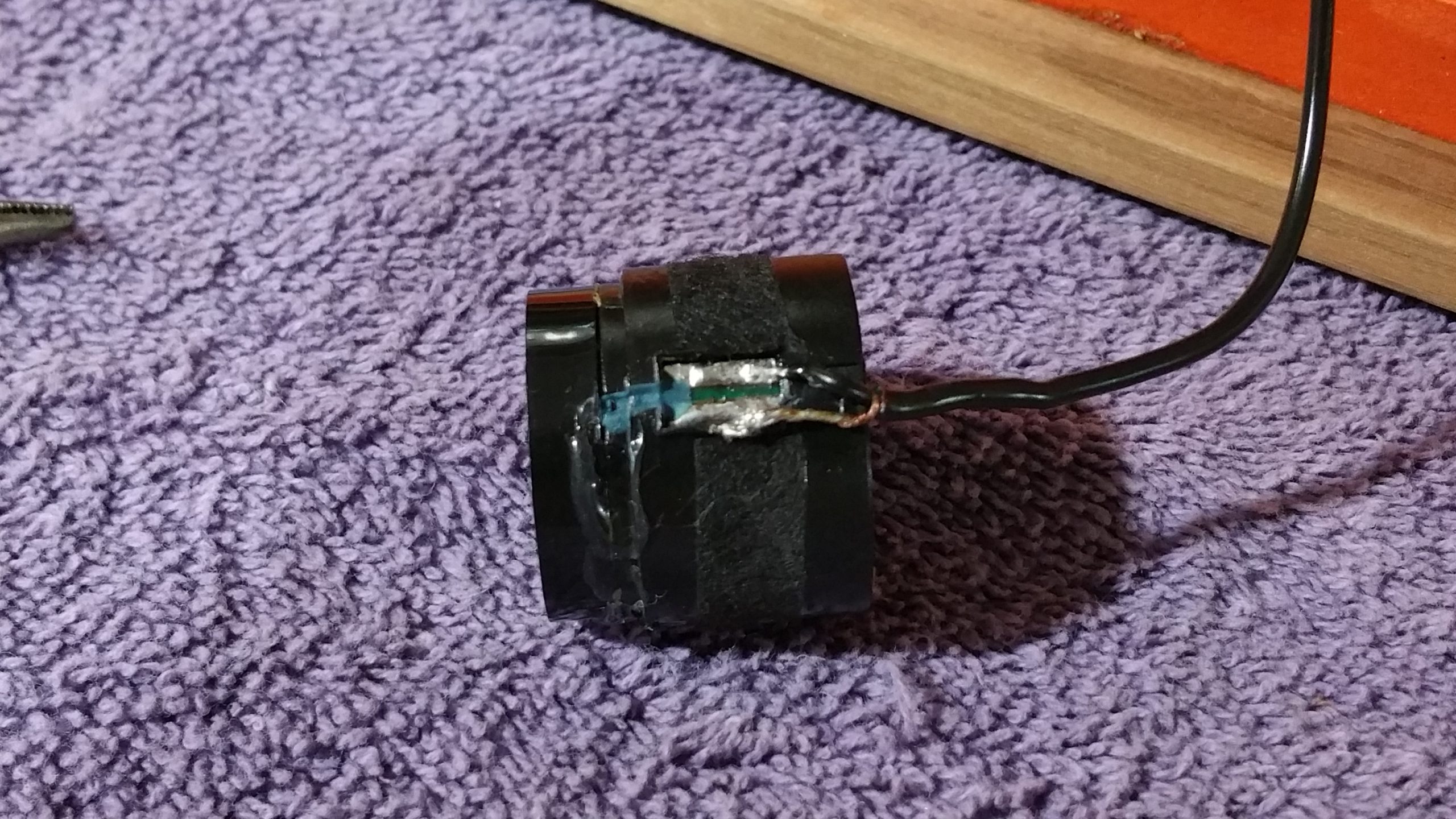
Slip the shrink wrap all the way up and heat so it shrinks and protects the wire a little bit. Next, slip the rubber isolator over the capsule. Now here is where a little luck always helps. The capsule is only a little bigger than the factory original mics and stretches the rubber just enough to make it a nice snug fit.
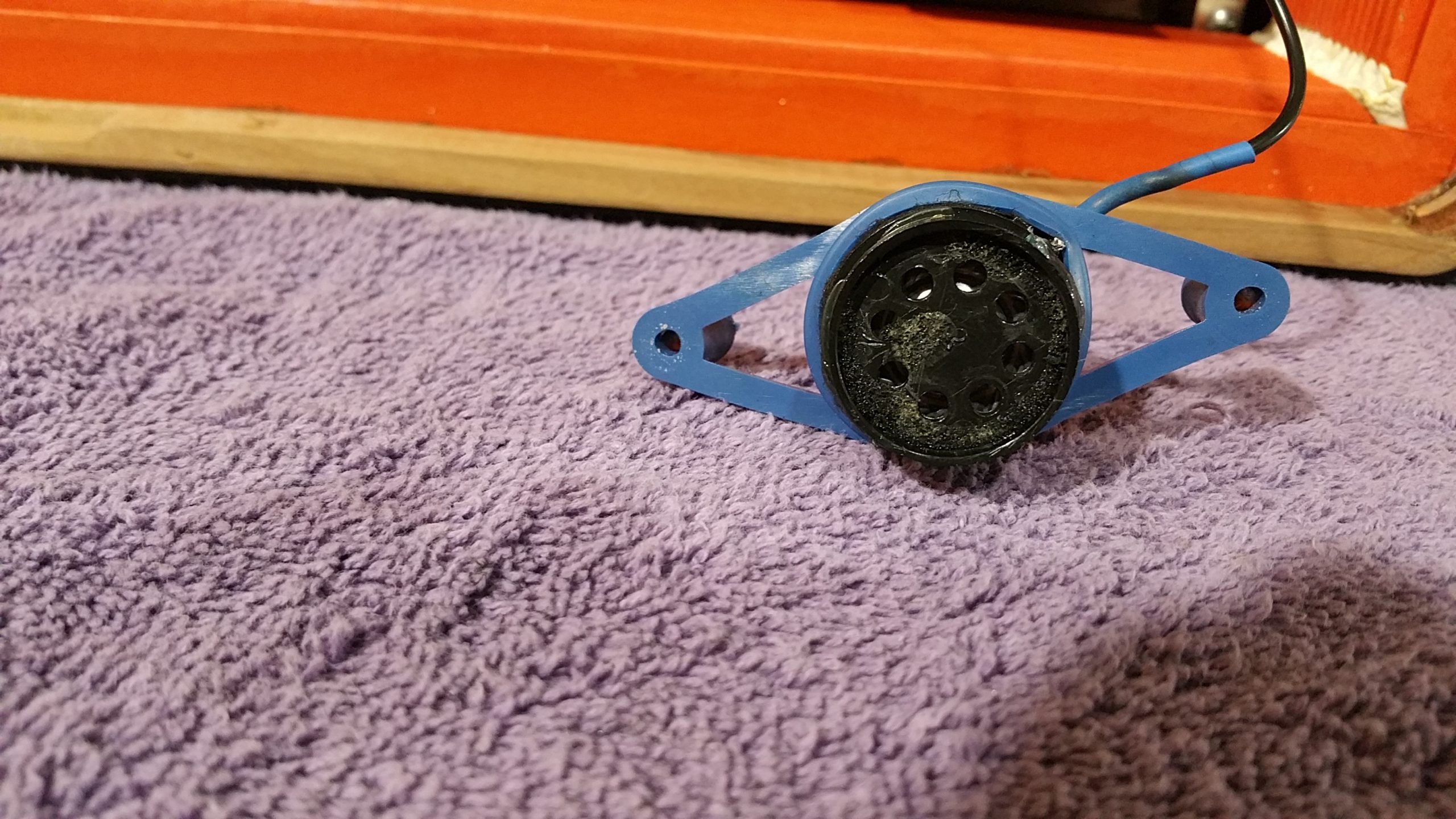
Install the setup back into the original location.
The finished product! I used gaffer tape to hold the original factory wire in place so that it doesn’t vibrate anywhere or fall into the reeds, which could be very bad.
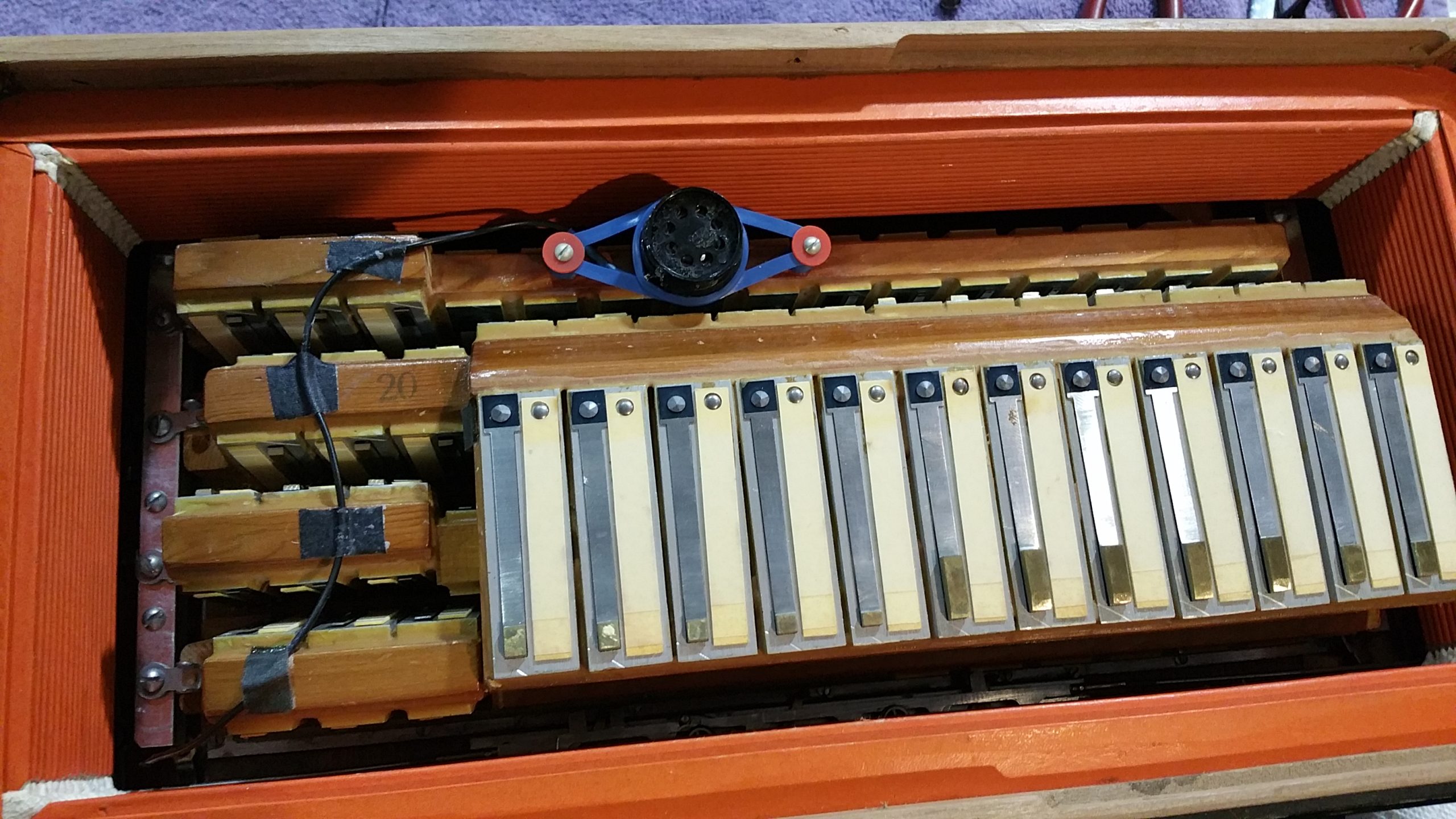
Now, I did the exact same thing with the mic installed on the right hand side.
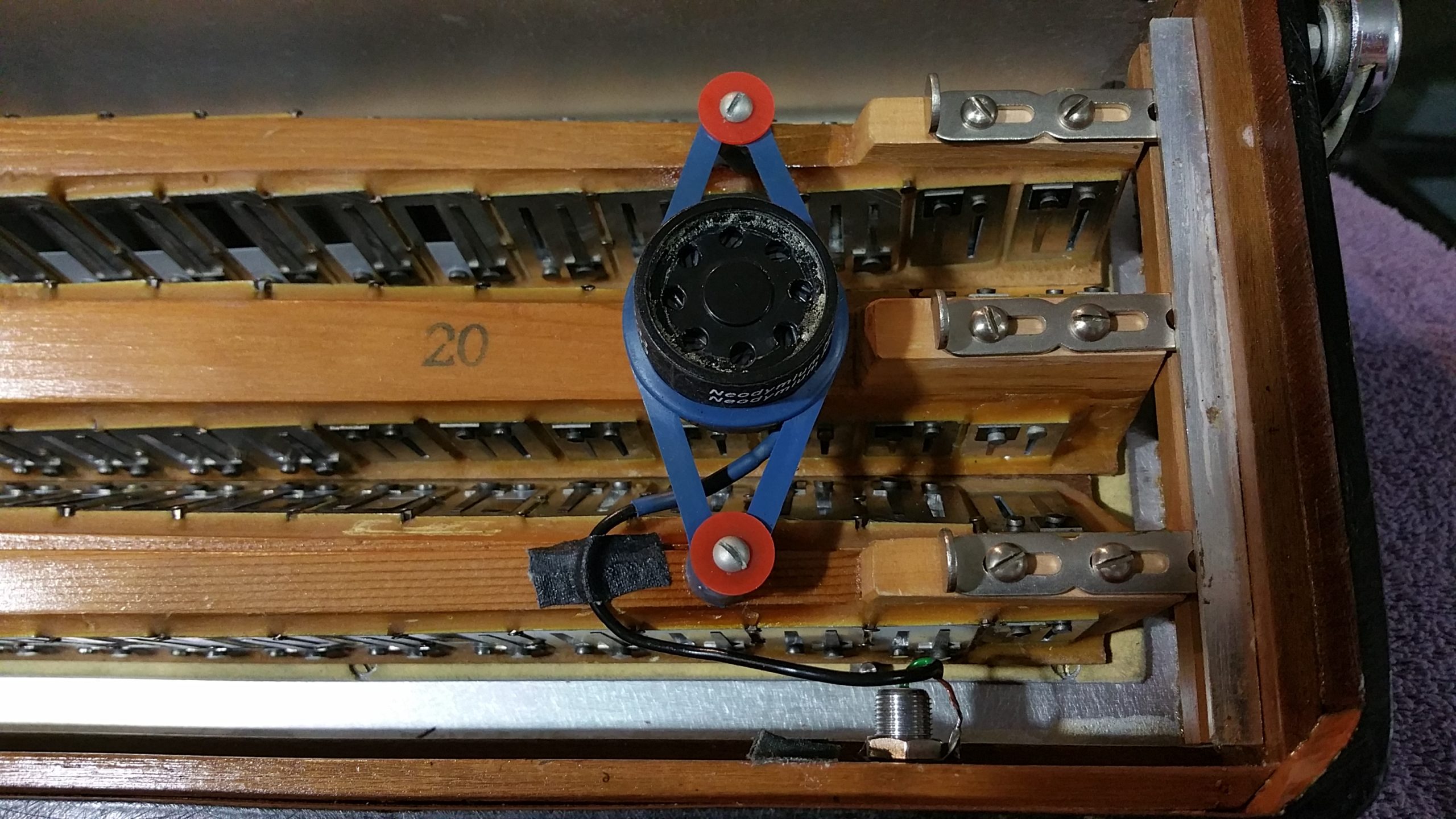
So, what did I learn?
Well, I learned that I did not need to spend thousands or even hundreds of dollars to get a working amplified sound back into my Hohner Morino VI N. Around $30 and 45 minutes of my time is what it took.
Here is a little wisdom that I also learned… I can find higher quality capsules for under $75 each and even further improve the sound quality and further increase sensitivity. SHURE makes replacement capsules for their dynamic mics that are practically a perfect fit and I will replace these mics in the future when I want to start making more serious recordings. When I do that, I will include part numbers and what not right here, if that is the direction I take.
Right now, it works well and the sound is acceptable for now (has a slightly warmer feel than other mics, which I like), and I did not need to send the accordion to Germany (as Hohner suggested in their email to me, which was kind of ridiculous!) and I did it for peanuts.
So, what are the downsides? Well, the outputs of the condenser mics are very low and I need to really crank the mixer up to maximum levels. But most importantly, it looks 100% factory original from the outside, and that makes me a happy camper! One day I might put some pro mics in there… if I can find something that has the factory look, but for now, this is great.
Addendum 2016-05-17
I’m ok with the sound of the Hohner through the mics I installed, but not ecstatic. The tone is slightly heavy in the md and mid-high-range and because they are dynamic mics, the output is pretty low, requiring me to crank the mixer to full to get the volume levels where I need them, but then I naturally introduce all kinds of hiss and noise to the sound, which I hate.
Of course, I can record at lower levels then clean and boost things up in post process easily enough, but that’s not the right way and if I ever by chance play live, that sound is going to be pretty ugly. Yeah, not surprisingly, if you want good sound, you have to fork out the big bucks. I’ve done some more reading about mics and found a site that covers all the things that I have already learned in a nutshell.
I kind of have made a choice as to what pro mics I would want to install there, however, I need to research price and what not later (these are something that I am going to have to save up for over a longer period of time) and the kit I am looking at is a DIY installation (which doesn’t scare me at all).
First, the site that I mentioned above about the nice general article concerning adding mics to accordions is HERE.
The microphone kit that I am looking at is made by Excelsior. Well, actually it’s Pigini. Well actually the mics are made for Pigini by HATools. The kit is called the HATools Konzertmikrokit 10+3 because they have 10 mics on the right hand, 3 on the left. There are options for left/right volumes, balance controls and even a wireless option that sounds very cool. They have a YouTube video that shows the install and their website is straight off of the Pigini.de page (strange that it is on a German site, not Italian, but not all that important).
Time to start saving my pennies, unless I find something that I like better!
Addendum September 27, 2016
I noticed that HATools have added a new option… the standard 10 mics on the right hand and now a new option for 8 mics on the left hand (a major increase over the previous 3 mics!). It’s specifically for Free Bass and/or converter accordions… nice touch!
As I write this, it is so new that they don’t have a price for this new piece yet, but I like the option! I’ve sent an email requesting some info and we will see what will happen.
Also, in my head, I am thinking that these mics are placed outside the accordion, in places where more clacking noise can be picked up. I am still back-sliding now and then and thinking that if I can find a good single or double mic setup that is VERY sensitive, that when placed inside the accordion, just might offer better results in this case, because inside I am much further from all the mechanical clatter, am closer to the reeds (the sound), and less susceptible to feedback because external noises are insulated out by the casing and bellows of the accordion.
I don’t know… I’m just considering all the possibilities at this point and trying to figure out what’s best, and that’s hard to say. More research is in my future, I suppose. What I would REALLY prefer is to have some kind of DIY solution that offers a good sound and doesn’t require me to crank up the mixer to maximum to get levels where I need them. Just thinking here… but, I need some kind of a microphone that is amplified to levels that permit good sound for the mixer and higher output levels, maybe something battery powered.
Addendum October 3, 2016
I sent off an email asking the owner of HA tools a couple of questions and I got an answer, but it’s not quite what I am liking. I asked what the price of his 1-mic internal setup was and he did not come back with a response, he told me that it was not very good and that the volume of the left hand drops off when I open the bellows versus when the bellows are closed. He then said that he could make me a custom internal setup for $510 Euros (a quite high $750Cdn smackers!). Uhhm… no, not happening.
On top of that, the 10+8 mic kit is even more expensive! Now, if I was a full-time performing professional artist, sure, no problem, but I am not, its all about fun for me, so I am looking for cheaper alternate solutions. More research is a coming!
Addendum October 13, 2016
I spent some time yesterday playing with the internal mic and sound of the setup, and I have a thought. I found the sound quality of the mic is fine, but the volume output of the internal dynamic electret mic is a bit low, causing me to not be able to bring up the level to “unity” (the zero level, and yes, I know, I’ve said it a few times). To get a well needed increase in volume, the answer is to boost the signal up. I can use an amplified mic set up (expensive) or I can try another direction… and this is the path that I have taken!
The Path Taken – Address the low volume coming out of the accordion
I’ve made a small investment ($39.99US… or about $65Cdn after shipping duty, taxes, etc.) and ordered a mic preamp. I picked up the Art Tube MP Studio preamp, and this should address the lower levels quite nicely.
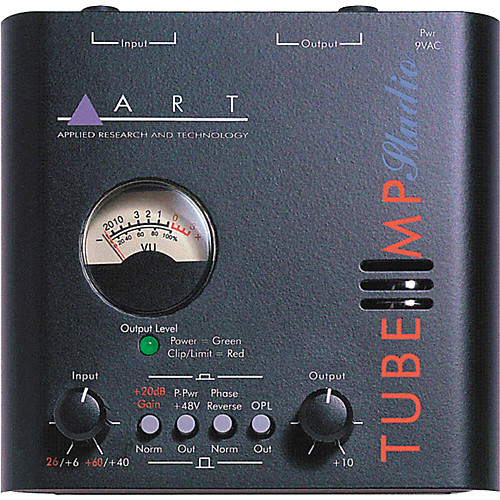
This unit has both a 1/4″ and XLR jack inputs and is kind of cute with it’s analog meter and all. There are plenty of YouTube videos about it that mostly show about how it adds “warmth” to whatever you put through it, but this is not the main reason I ordered this unit.
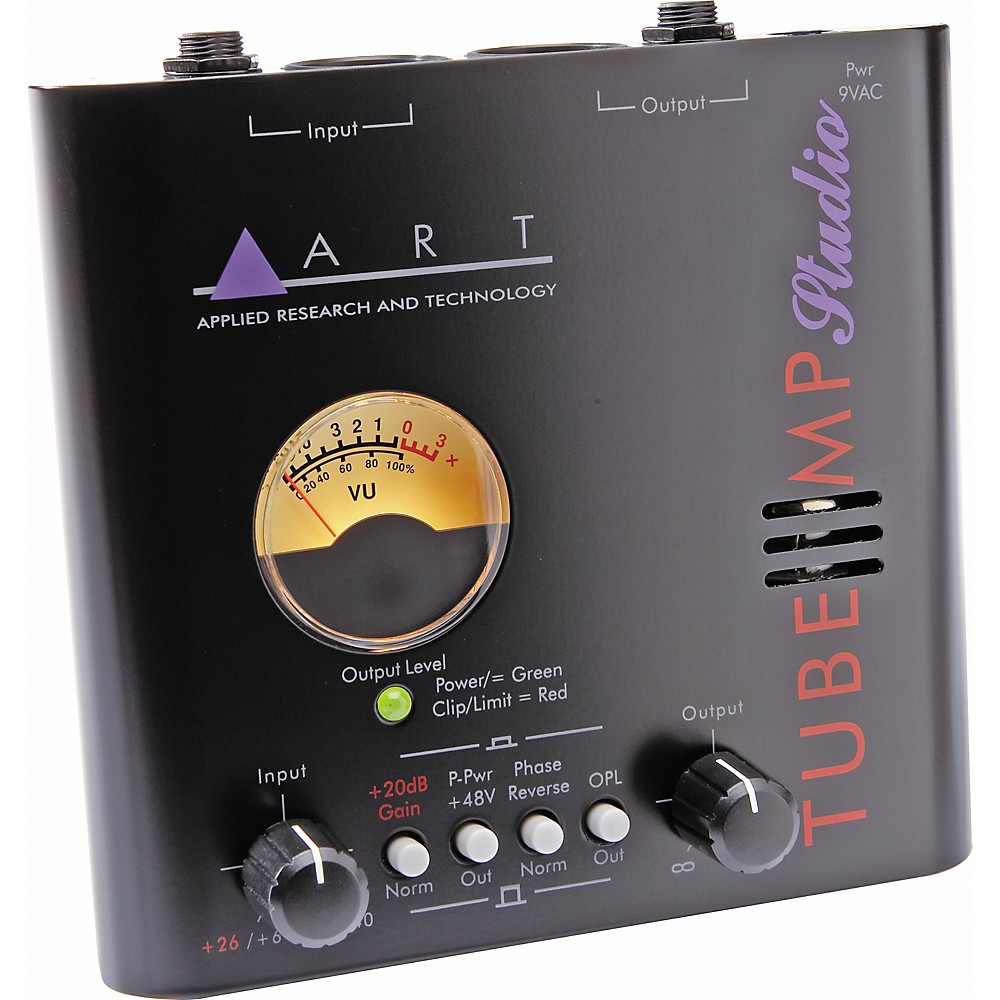
I ordered this unit to boost the signal, and one of the buttons on this unit are the +20db gain boost (sounds about right for what I need!), which I have a feeling is going to be a default setting for me. There is a ton of talk and several YouTube videos about replacing the internal tube of this preamp and change the sound characteristics. Not something that intrigues me for the moment, but I am looking forward to getting the preamp and seeing how it will work for me and my accordion. Delivery is supposed to happen in about a week, so we will see.
HERE’S a link to the PDF owners manual.
Possible issues? The potential inconsistent bass volume issue:
In my email discussions with the makers of the HATool mic kits, he mentioned that in a single mic setup, that there could be a volume drop off of the left hand when the bellows are extended versus when they were close. Of course because the mic placement is much closer to the treble reeds, the theory that since the distance from the bass reeds to the mic increases as I pull open the bellows, that the volume of the bass side drops.
That is his theory, and in an open air scenario, I can see this as being a big issue. Ever notice the difference in voice volume when holding a mic 2 inches from the mouth and then moving it to 12 inches?
Big difference!
My theory, however, is a bit different. It is that the sounds inside the bellows are quite nicely contained and much more blended between the right and left hands because they are all contained within a small area of the bellows and are bouncing all around in there and this tends to even things out a little. I expect there is a difference, but how much will it be in real life?
Based on some tests I already did, I think that I may see some differences in volume between fully closed and fully open, but its not appearing to be a huge amount. I know that it is a lot less than the example of an open air held mic, but just how much and will it enough to affect my recordings, I will have to measure once I can set proper recording levels with the coming new preamp in place and do a few tests.
Addendum October 14, 2016
I just got an email letting me know that the ART Tube MP Studio Mic Preamp was shipped. It may be silly, but I am quite excited!
Addendum October 15, 2016
I received another email with tracking information today!
Scheduled Delivery: Wednesday, 10/19/2016, By End of Day
Last Location: Departed – Kansas City, KS, United States, Friday, 10/14/2016
So by Thursday we should have an idea of how this all works.
Addendum October 20, 2016
I received the preamp!
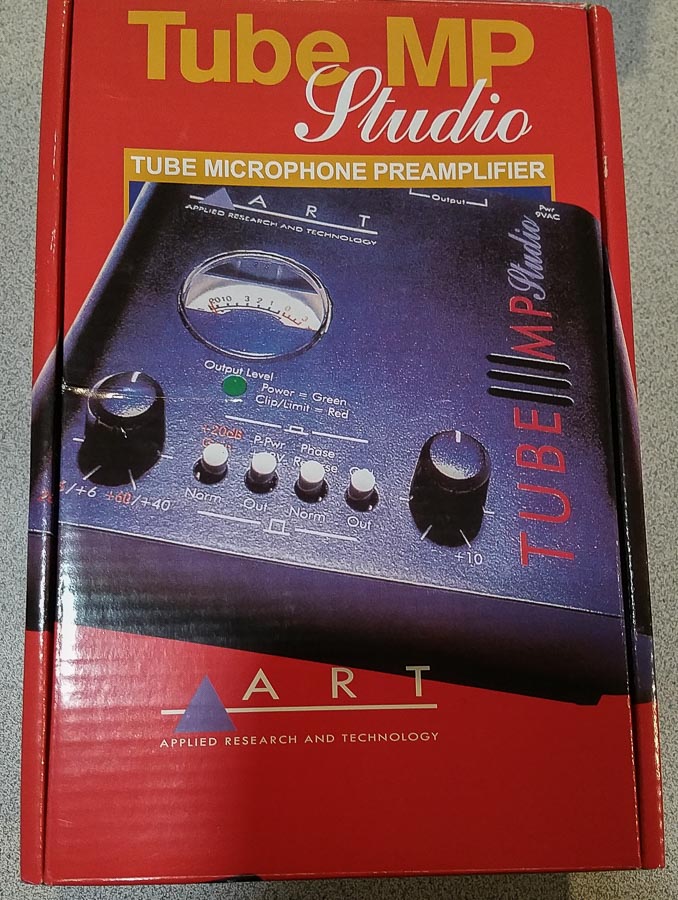
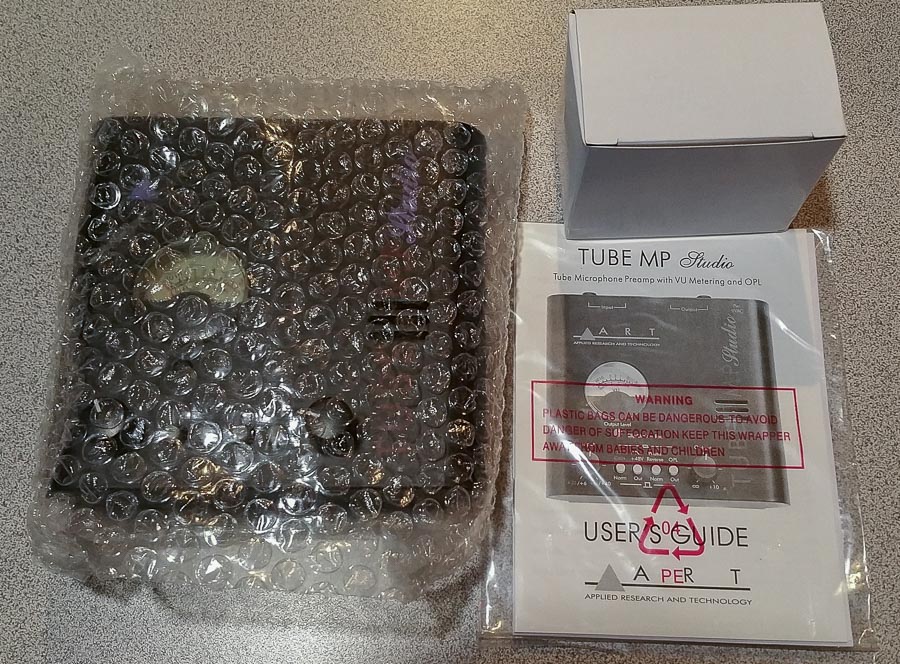
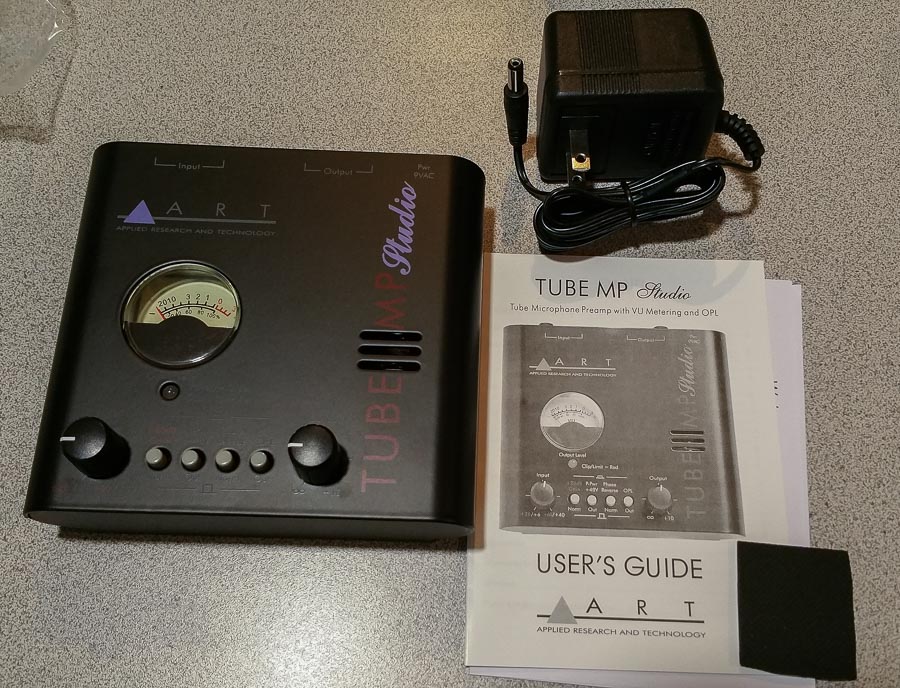
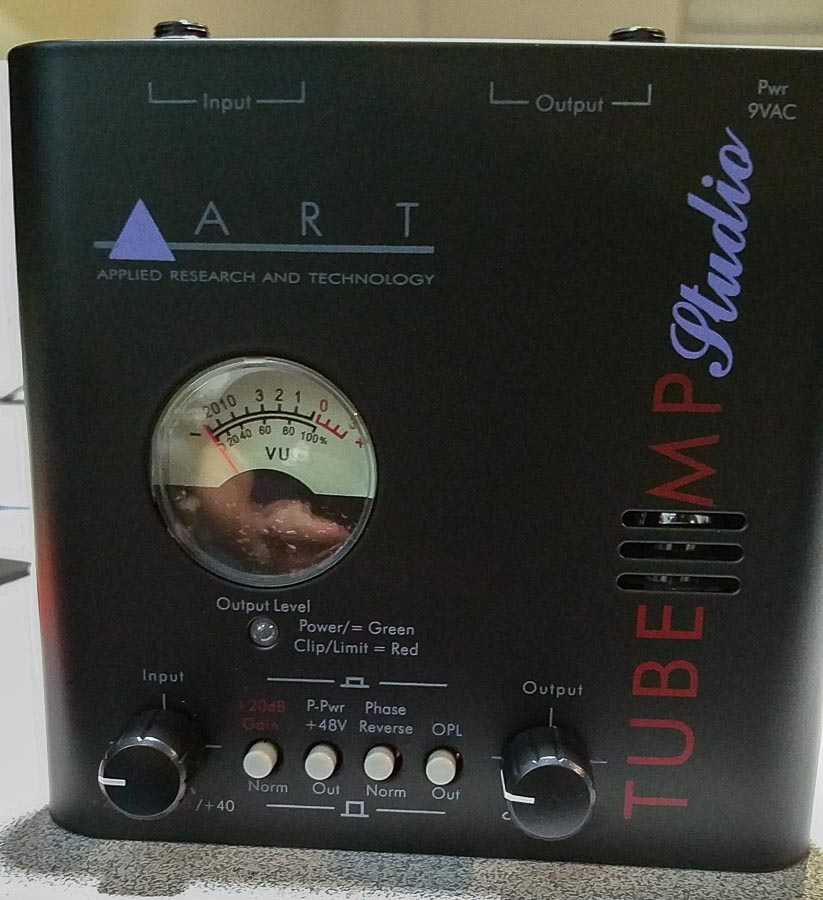
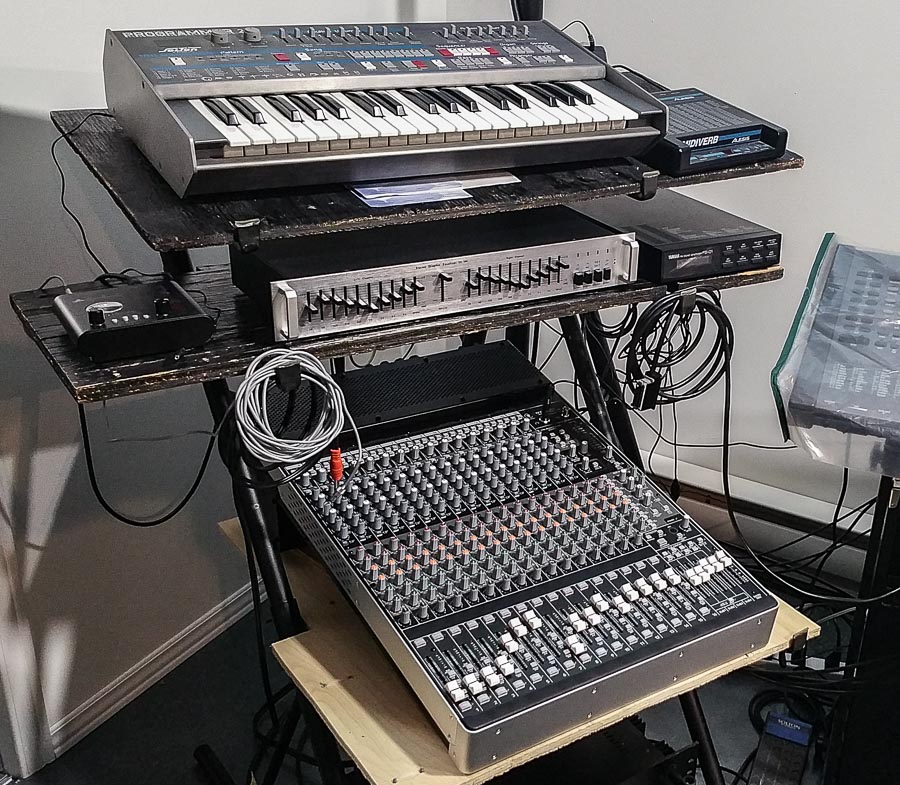
After hooking it up, I tried various settings and was surprised that I was getting a bit of overdrive hiss. Well, it took me a few minutes to find the right combination and the unit started sounding much cleaner with virtually no hiss, and the volume levels were right up there, finally… SUCCESS! Hearing the accordion properly though the Bose speakers for the first time ever, I had to make a few minor adjustments to the EQ on the mixer to tune it to my tastes, but it really works nice!
The best results came when I put the mixer gain to the 12:30 position, lowered the highs a bit, lowered the mids just a tiny amount and boosted the lows about +2db (around the one o’clock position). Nice!
From the MPTube Studio side here are the settings that worked best for me so far:
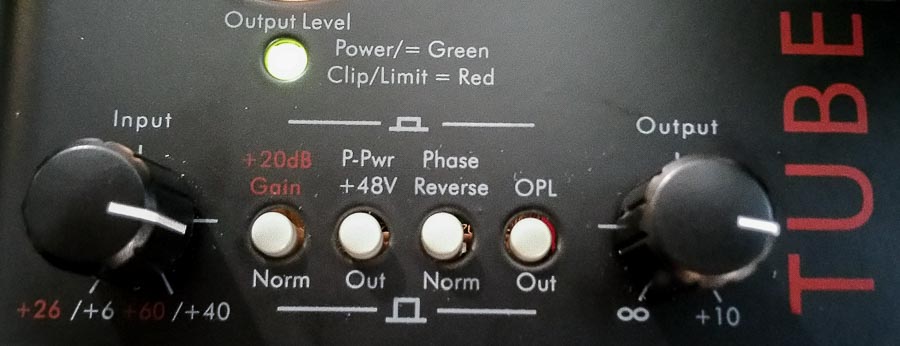
Both dials were a bit past the three o’clock positions and as predicted, I needed the +20db gain button pushed in. This brings things right around to the +2db setting on the mixer, but pressing the OPL (peak limiter) button, gives me good sound everywhere and peaks right at 0 (zero), which is just what I need. I can get the knobs to go lower on the preamp by increasing the gain on the mixer, and I might do that a little, but if any noise shows, I will return it right back to these settings as I know they work and am more than satisfied with the results.
I have finally come up with a satisfactory solution for my big accordion and learned quite a few things in the process! I’ve learned that dynamic mics can do the job in terms of sound quality and tonality with a bit of help, and I can now finally hear the Hohner Morino VI N in all it’s glory and can make recordings with this accordion again at proper sound levels without the need to clean and boost the sound during the post process and now also have a viable live performance instrument if needed.
In short, I am one happy camper and just lovin’ it… and yet… hmmm… I still wonder how hard it would be to learn how to design my own custom made “high end” microphone setup (similar to HATools), by myself? That’s also a possible project for way in the future. 😀
Now, don’t think that this story is over! I have at least one more phase here that I am considering on playing with , and that is to find a cheap wireless method. Let’s start a new post on that one later, as this one is getting quite long.
Enjoy!